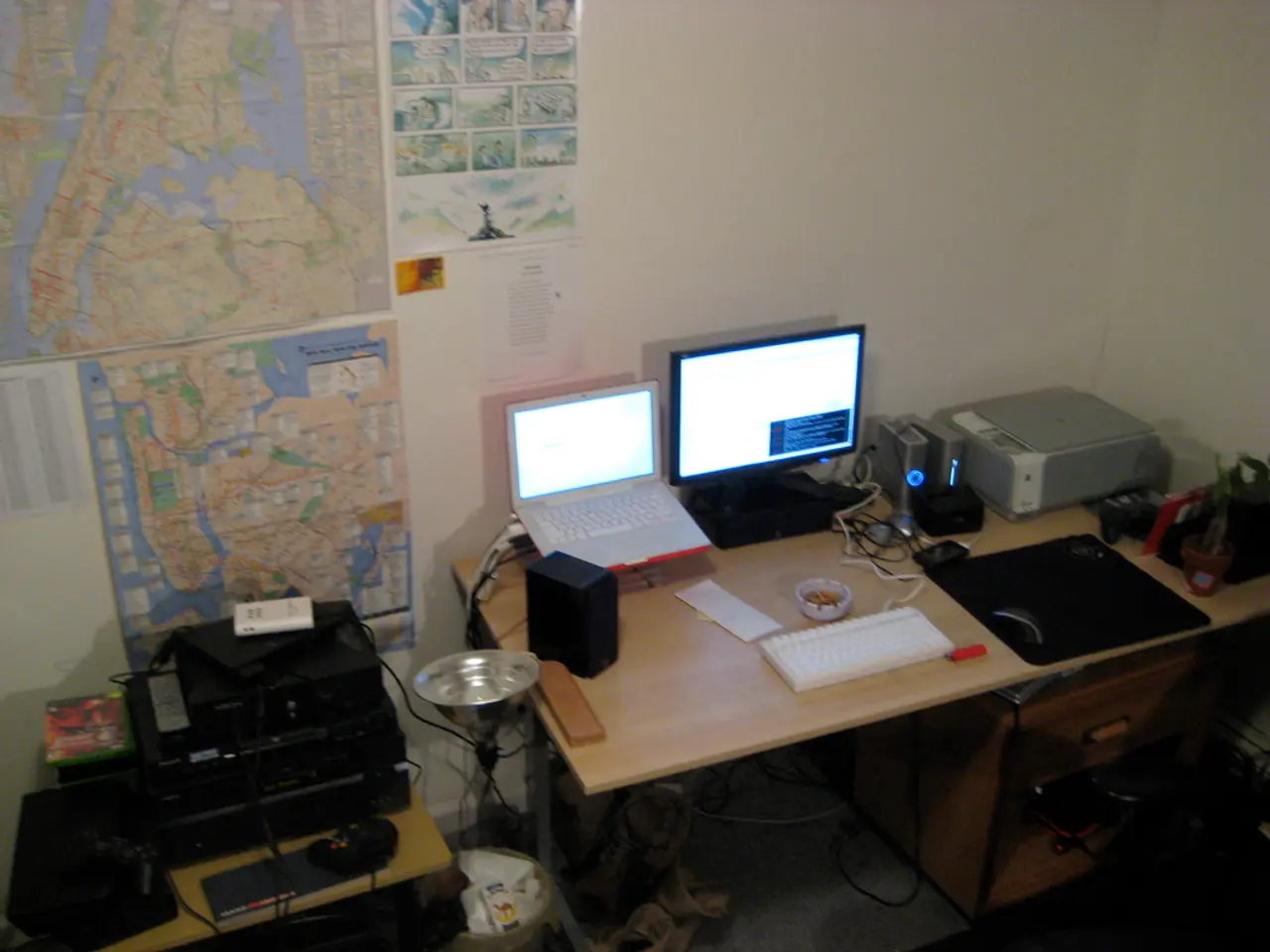Large-scale SSDs Fuel AI Tasks While Bolstering HDD Usage Demand
In the world of data storage, the future is bright and promising. Two key players, Hard Disk Drives (HDDs) and Solid State Drives (SSDs), are set to undergo significant changes over the next decade. According to Coughlin Associates, HDD storage capacity shipments are expected to continue growing beyond 2030, with HDD prices dropping from about $19 per TB in 2020 to approximately $4.75 per TB by 2030. This represents a 75% reduction in cost.
HDD technology improvements such as microwave-assisted magnetic recording (MAMR) and heat-assisted magnetic recording (HAMR) are projected to push HDD capacities up to around 150 TB per drive within a decade. Despite this, the price curves of SSDs and HDDs will not cross through 2030, meaning HDDs will maintain a significant cost advantage per terabyte.
On the other hand, SSD prices are expected to fall even more sharply, from roughly $125 per TB in 2020 to about $20 per TB by 2030, an over 80% price drop. However, HDDs are expected to remain dominant for large-scale, cost-sensitive bulk storage applications through 2030 and beyond.
In the realm of SSDs, companies like Sandisk are introducing high-capacity eSSDs for AI workloads. Sandisk's high capacity eSSD, a QLC BiCS8 NAND flash U.2 and EDSFF form factor SSD, is expected to have capacities up to 256TB by 2026. FMS 2025 is expected to show growth of high-capacity SSDs up to 1PB and high-capacity HDDs to support the growth of AI workflows.
The larger SSDs are expected to be used for data lakes feeding the memory attached to GPUs for AI workflows, potentially leading to greater growth of HDDs. Higher capacity SSDs can take less rack space than HDDs and offer higher performance for AI training and inference.
As of 2021, flash memory is about 6X more expensive per storage capacity than HDDs and is expected to remain so for some time into the future. However, the rising storage market, driven by AI, is expected to result in significant revenue growth for both HDDs and SSDs.
By 2030, the projected revenue for SSDs is $93B and for HDDs is $55B. Despite the projected revenue growth, the cost advantage of HDDs is expected to keep them as the go-to choice for large-scale, cost-sensitive storage needs.
In summary, HDDs and SSDs are expected to coexist and complement each other in the storage market, with HDDs maintaining their dominance in cost-sensitive, large-scale storage applications, and SSDs catering to performance-driven applications. The future of data storage is promising, with advancements in technology set to revolutionise the way we store and manage data.
Table: 2030 Projections for HDDs and SSDs
| Metric | HDD (2030 Projection) | SSD (2030 Projection) | |-------------------------|------------------------|------------------------| | Price per TB | ~$4.75 | ~$20 | | Capacity per drive | ~150 TB (projected) | Increasing but lower than HDD| | Market role | Dominant for bulk, affordable large-scale storage | Performance-driven applications |
- Finance and investing in the data-and-cloud-computing sector within technology will find a bright future as HDD and SSD markets are projected to display significant revenue growth, totaling $93B for SSDs and $55B for HDDs by 2030.
- In the realm of Solid State Drives (SSDs), companies like Sandisk, Sk Hynix, Samsung, Kioxia, and others are making strides, with Sandisk, for instance, introducing high-capacity eSSDs for AI workloads, projecting capacities up to 256TB by 2026, showcasing the ever-increasing advancements in technology within the data storage industry.




